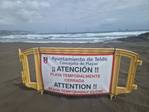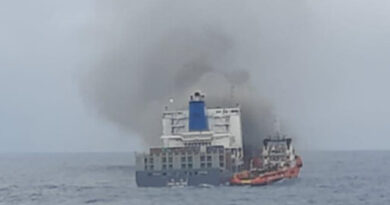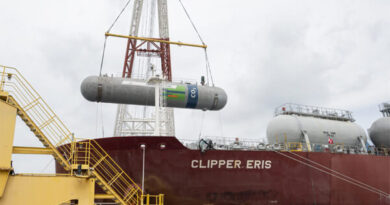Whatever The Mission, The Coast Guard’S Got A Boat For
The Coast Guard (including its heritage services) have employed boats since the beginning. Boats are just as important, if not more so, than ever.
America’s first “boat force” came about in 1878, with the creation of the United States Life Saving Service (USLSS), whose boat crews rescued mariners in distress along the nation’s coast line. In 1915, the USLSS merged with the United States Revenue Cutter Service (established in 1790) to form the modern-day United States Coast Guard. The Revenue cutters utilized their boats for inspections, enforcement of regulations and collection of customs duties. In 1939, the U.S. Lighthouse Service joined the Coast Guard. As many lighthouses were on island or difficult to reach by land, many relied on boats.
Today, boats are used to carry out all Coast Guard every mission.
For the Coast Guard, there is a definite distinction between cutters and boats.
The Office of Boat Forces (CG-731) sets standard for safe and effective boat operations and provide integrated policies, resources, and training programs to CG Boat Forces for the safe and effective execution of CG missions.
According to the service’s “Boats of the U. S. Coast Guard, “The term “boats” includes any Coast Guard vessel under 65 ft. in length without a permanently assigned crew. Commissioned vessels 65 feet and greater in length are classified as ‘cutters’.”
All cutters have at least one boat. Cutter deployed boats expand a cutter’s operational presence and provide critical ‘end game’ capabilities in law enforcement, narcotic and alien interdiction, search and rescue, and other Coast Guard missions
Today, there are many specialized boats to carry out Coast Guard missions. Some Coast Guard boats exist in small numbers, in small quantities, generally in specialized roles. Others have been procured in large quantities for service afloat and ashore. Here’s are a few standard types that are prevalent in the service today:
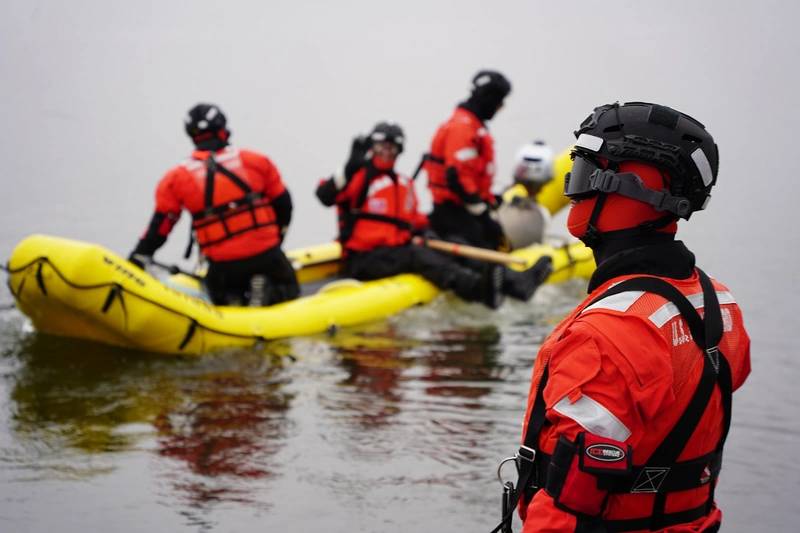 A Coast Guard Station Manistee crew operate an ice rescue skiff ice Jan. 30, 2024, on Manistee Lake, Michigan. The crew conducted ice helicopter operations with Coast Guard Air Station Traverse City to enhance their rescue training techniques during the winter season.
A Coast Guard Station Manistee crew operate an ice rescue skiff ice Jan. 30, 2024, on Manistee Lake, Michigan. The crew conducted ice helicopter operations with Coast Guard Air Station Traverse City to enhance their rescue training techniques during the winter season.
U.S. Coast Guard photo by Seaman Christine Bills
- 47’ MOTOR LIFEBOAT (MLB) – TEXTRON MARINE – Slidell, LA
The MLB is the shore-based go-to rescue craft for high seas, surf, and heavy weather environments. Its engines are designed to operate without interruption in a capsize event, and the boat can self-right in less than 30 seconds. Top speed is 25 knots. More than 100 are operational. The Coast Guard is currently conducting a service life extension program to extend the service life of the 47-foot MLB fleet.
- 45’ RESPONSE BOAT ‐ MEDIUM (RB‐M) – MARINETTE MARINE, Marinette, WI/KVICHAK MARINE, Seattle, WA
They entered service in 2008, with 174 of them built. With excellent maneuverability, the waterjet propulsion makes them maneuverable and fast—40 knots plus. They are used for off-shore search and rescue, law enforcement, and security missions, and are found at Coast Guard stations throughout the country.
- 29’ RESPONSE BOAT‐SMALL (RB‐S II) – METAL SHARK ALUMINUM BOATS, Jeanerette, LA
The Coast Guard has procured 370 multi-mission RB-S II boats. They entered service in 2008 and are assigned to boat stations throughout the country, as well as with Maritime Safety and Security Teams (MSST) and training commands.
- 49’ STERN‐LOADING BUOY BOAT (BUSL) – COAST GUARD YARD, Curtis Bay, MD
A number of boats are used to maintain the aids to navigation (ATON) system on the coasts and inland waters. The BUSL is are designed for lifting and servicing buoys and other aids to navigation. 26 are in service. They have light icebreaking capabilities, and are assigned in districts one through nine.
- 26’ CUTTER BOAT ‐ OVER THE HORIZON (CB‐OTH V) – INVENTECH MARINESOLUTIONS, Bremerton, WA
The first of the 194 CB-OTH V have joined the fleet. Eventually they will be deployed on National Security Cutters (NSC), Offshore Patrol Cutters (OPC), Polar Security Cutters (PSC), and Fast Response Cutters (FRC).
- 26’ CUTTER BOAT ‐ OVER THE HORIZON (CB‐OTH IV) – SAFE BOATS INTERNATIONAL, Port Orchard, WA
The 40-knot CB-OTH is carried aboard cutters and launched when a quick response is required for beyond-sight pursuit and interdiction; boardings and searches; and SAR. The first entered service in 2013, with 130 built.
- 64’ SPECIAL PURPOSE CRAFT ‐ SCREENING VESSEL (SPC‐SV) – GLADDING HEARN / DUCLOS, Somerset, MA
Unlike many Coast Guard cutters and boats, the SPC-SV has a specific mission to escort high-value U.S. Navy assets to and from port. The bow-mounted remote-controlled gun gives the SPC-SV some teeth. The 12 SPC-SV boats have been procured by the Navy and operated by Coast Guard crews at Maritime Force Protection Units (MFPU).
- 35’ CUTTER BOAT ‐ LONG RANGE INTERCEPTOR (CB‐LRI II) – METALCRAFT MARINE, Cape Vincent, NY
The second generation LRI has speed (35+ knots) and range (227 nm at 25 knots) that expands the reach of the 10 National Security Cutters (NSCs) in the fleet. Each NSC has an LRI as one of its three boats carried.
- 15’ SKIFF ‐ ICE RESCUE (SKF‐ICE) – OCEANID, Bow, WA
This small craft is included in this list for contrast. The Coast Guard has 47 of these small 15-foot boats for use in very cold conditions. The 2.3 HP engine is designed for cold conditions. These boats are especially useful for rescue on ice floes in the Great Lakes.
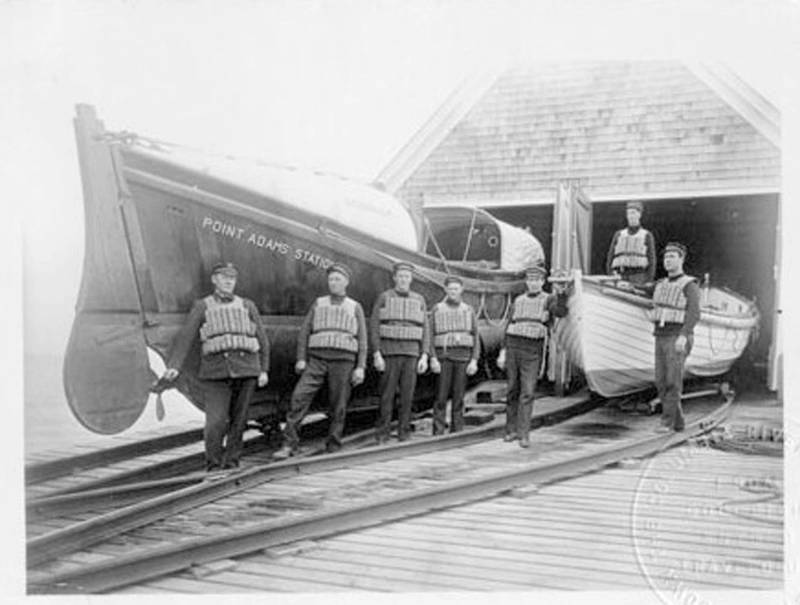 The United States Life Saving Service established the Point Adams Station in 1888.
The United States Life Saving Service established the Point Adams Station in 1888.
Image courtesy U.S. Coast Guard History Service)
Request for Information will help Coast Gurd with Response Boat Replacement
The Coast Guard is looking ahead to replacing the 29’ Response Boat – Small 2nd generation (RB-S II). The service recently posted a “Request for Information,” (RFI), which isn’t a solicitation, but rather a way to understand the state of the market base for what will become the Response Boat – Small, 3rd Generation (RB-S III).
According to the RFI, “The RB-S II is a shore-based boat with primary missions in Search & Rescue (SAR); Law Enforcement (LE); Ports, Waterways, Coastal, and Security (PWCS); Drug Interdiction (DI); and Migrant Interdiction (MI).”
Among other things, the RFI asks if potential bidders can build and deliver an operational test and evaluation boat in a 3-month timeframe or 6-month timeframe. It also asks, “Is 7 years a reasonable period to build and deliver the full fleet of approximately 348 boats?”
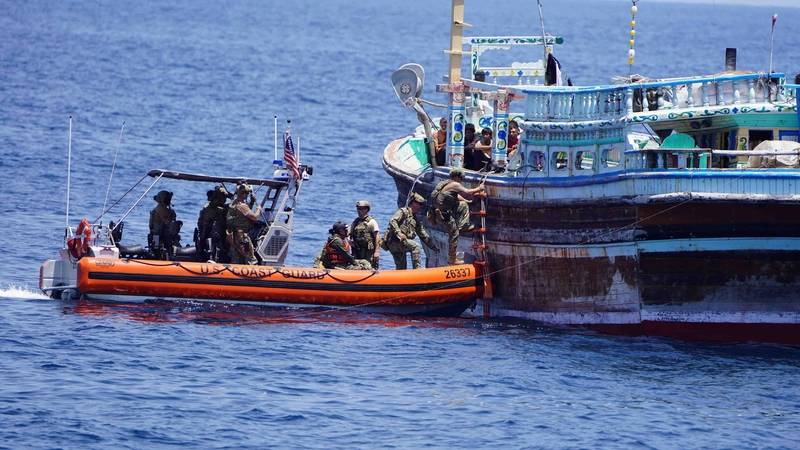 U.S. Coast Guardsmen from the Sentinel-class fast-response cutter USCGC Clarence Sutphin Jr. (WPC 1147) board a vessel suspected of smuggling illegal narcotics during Focused Operation Crimson Barracuda in the Arabian Sea, April 10, 2024.
U.S. Coast Guardsmen from the Sentinel-class fast-response cutter USCGC Clarence Sutphin Jr. (WPC 1147) board a vessel suspected of smuggling illegal narcotics during Focused Operation Crimson Barracuda in the Arabian Sea, April 10, 2024.
Official U.S. Coast Guard courtesy photo
